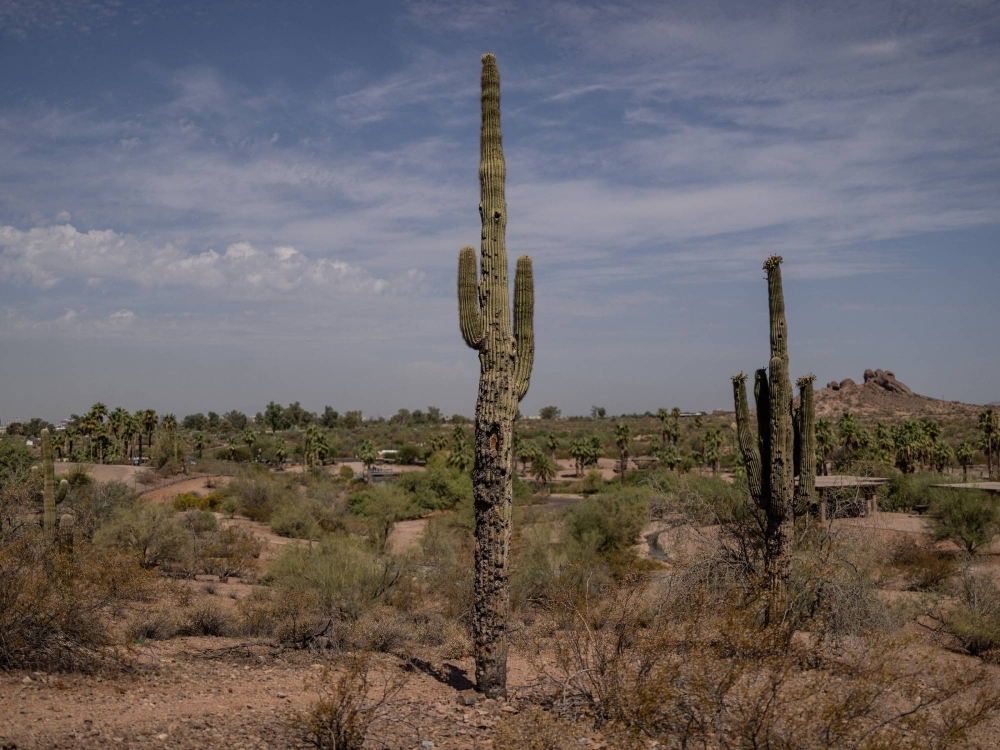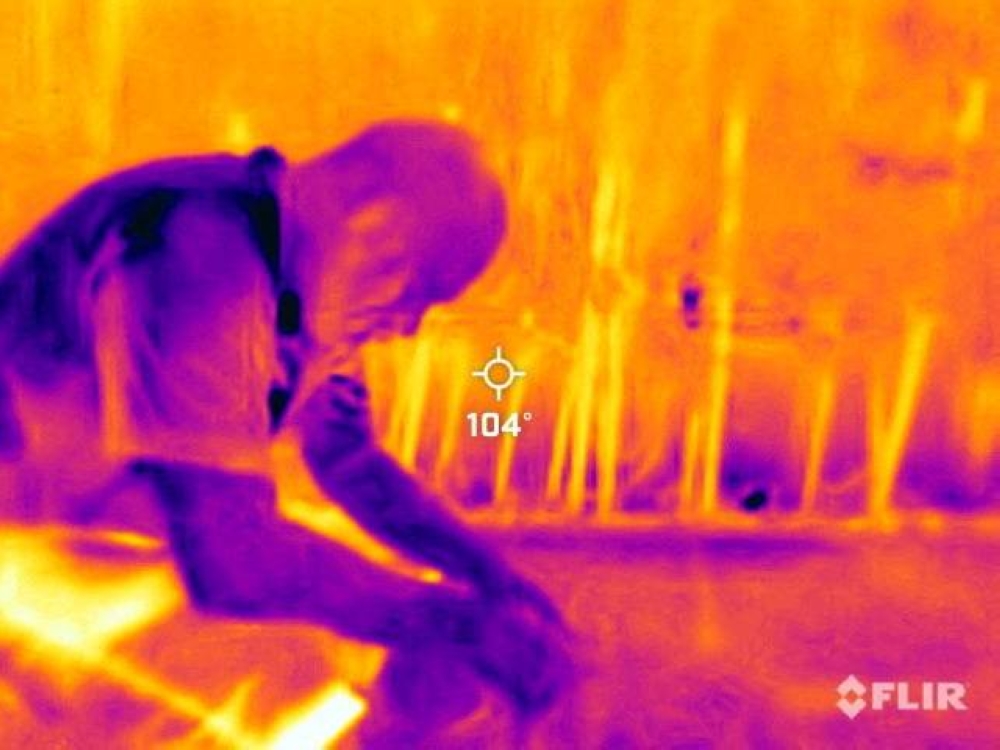As the world registered the hottest month of all time in July, the southwestern U.S. city of Phoenix shattered its own 1974 heat-wave record with temperatures above 43 degrees Celsius for 31 straight days.
But heat-sensitive photography in late July reveals an even hotter Phoenix, where concrete on the street registers 66 C, outdoor workers’ bodies reach 41 C and homeless people swelter, surrounded by surfaces as hot as 62 C.
Before 10 a.m. at one of the city’s favorite sites — the Desert Botanical Garden — the thermometer is already at 44 C, but a Saguaro cactus records a surface temperature of 49 C. A man walks on a road with no shirt and a bottle of water; The camera puts his temperature at 40 C.
The summer monsoon rains that historically help Phoenix residents and the vegetation cool down have been scant this year, and even the cacti have started to collapse.
Health workers say hospitals have been inundated with patients suffering from heatstroke, sometimes life-threatening.
“We’ve had patients that are 111 degrees,” said Dr. Frank LoVecchio at Valleywise Health in Phoenix, using the Fahrenheit scale to refer to around 43 C. “Your brain cannot handle that that long.”
Patients are put into an ice slurry to bring their temperatures down as quickly as possible.
At noon, the record temperature is 42 C but the surface temperature is a furnace-like 65 C. A construction worker drinks water and the camera shows his body is at 40 C.

Unhoused people sit inside a cooling station during a heat wave in Phoenix, Arizona, on July 26. A thermal camera registered a surface temperature of 18 C, with an air temperature of 36 C.
| REUTERS
Phoenix, the capital of Arizona, is now a city of 1.6 million people — the fifth most populous in the United States. It sprang to life over 150 years ago with the arrival of the pioneers, who built irrigation canals to make the land fertile.
Despite its location in the Sonoran Desert — which stretches across the U.S. southwest and into northern Mexico — Phoenix has become a favorite place for retirees, attracted by year-round sun and its ocher mountain backdrop.
For those who can afford it, there is air conditioning. A Major League Baseball game is played early in the afternoon at Chase Field, where a retractable roof and air conditioning keeps the stadium a cool 18 C.
But for the homeless population of Phoenix, there is no such respite.

A saguaro cactus at the Desert Botanical Garden in Phoenix, Arizona, on July 26. A surface temperature of 49 C has been recorded for a similar cactus before 10 a.m., with air temperatures already at 44 C.
| REUTERS
A homeless man sitting on an abandoned microwave oven at around 3:30 p.m. is captured by the heat-sensitive camera and the surface temperature around him is 61 C.
“About half of our patients who come in in this comatose state are homeless,” said Dr. LoVecchio.
Sometimes people pass out on the scalding pavement, suffering serious burns on their bodies.
With day after day of relentless heat, and evenings that remain at 32 C, there is little chance for the homeless to recover and hydrate. The heat also worsens conditions like diabetes, lung disease and heart issues. And some suffer memory loss and cognitive decline.
Maricopa County, where Phoenix is located, reported 39 confirmed heat-associated deaths by the end of July, with over 300 more under investigation to determine if they were also caused by heat.

